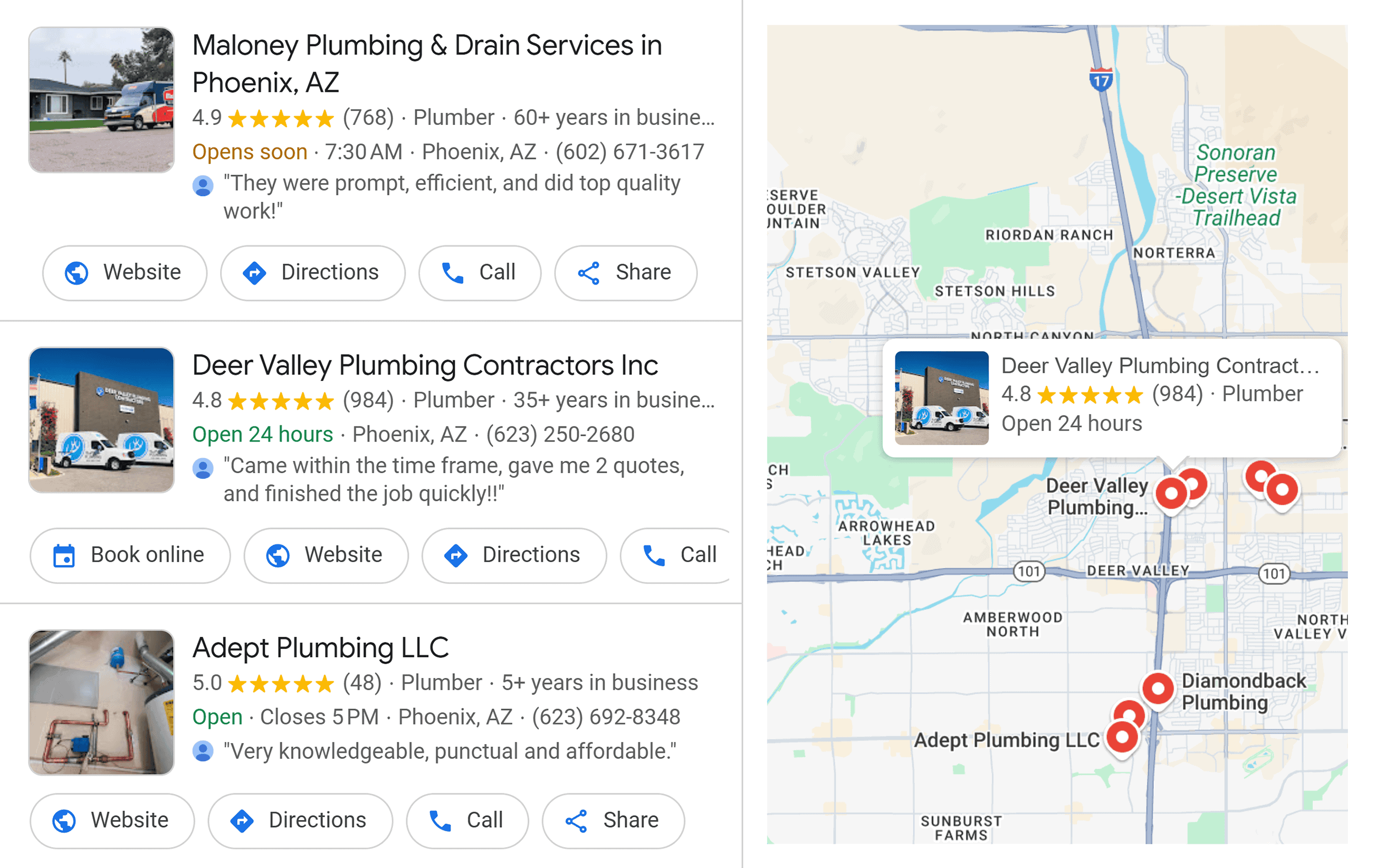![]()
How To Track Map Pack Rankings
One of the first steps in any local SEO campaign is to benchmark where you’re at.
Specifically, you want to see where you rank in The Map Pack. And track your Map Pack rankings over time.
Pretty much every rank tracker on the planet has Map Pack tracking.
The issue is that, with local SEO, where you’re searching from is HUGE. In fact, the Map Pack results can be completely different from one mile to the next.
For example, let’s say someone searches for a “coffee shop” on 72nd st and 2nd avenue in NYC.
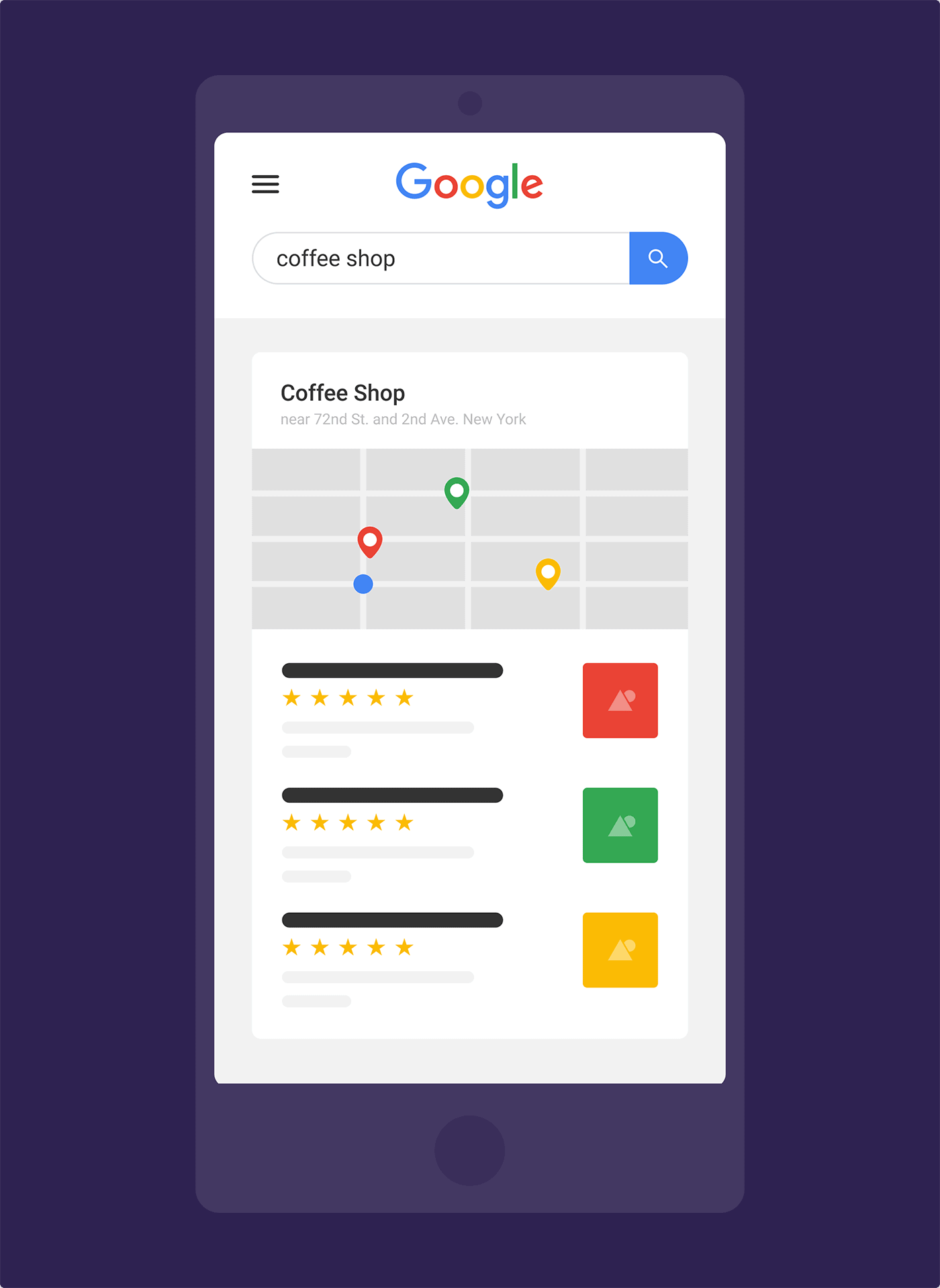
Those results are going to be super tailored to where that person’s standing.
In fact, that same search performed a few blocks away can bring up a completely different site of Map Pack results (or the same results in a different order).

if you only track your local rankings from a single location (like “New York”), you’re only seeing a small sample of where you actually rank in the real world.
Which is why you want to get super granular with your local rankings. That way, you can see where you rank across your entire city or local area.
I recommend a tool called Local Falcon for this kind of detailed Map tracking.

But there are others, like Local Viking, that do pretty much the same thing.
Anyway…
The first step is to choose your business name (Note: this feed comes directly from Google Maps. So to use this tool, you’ll need a Google Business Profile profile already set up).

Then, choose a keyword you want to check your rankings for.
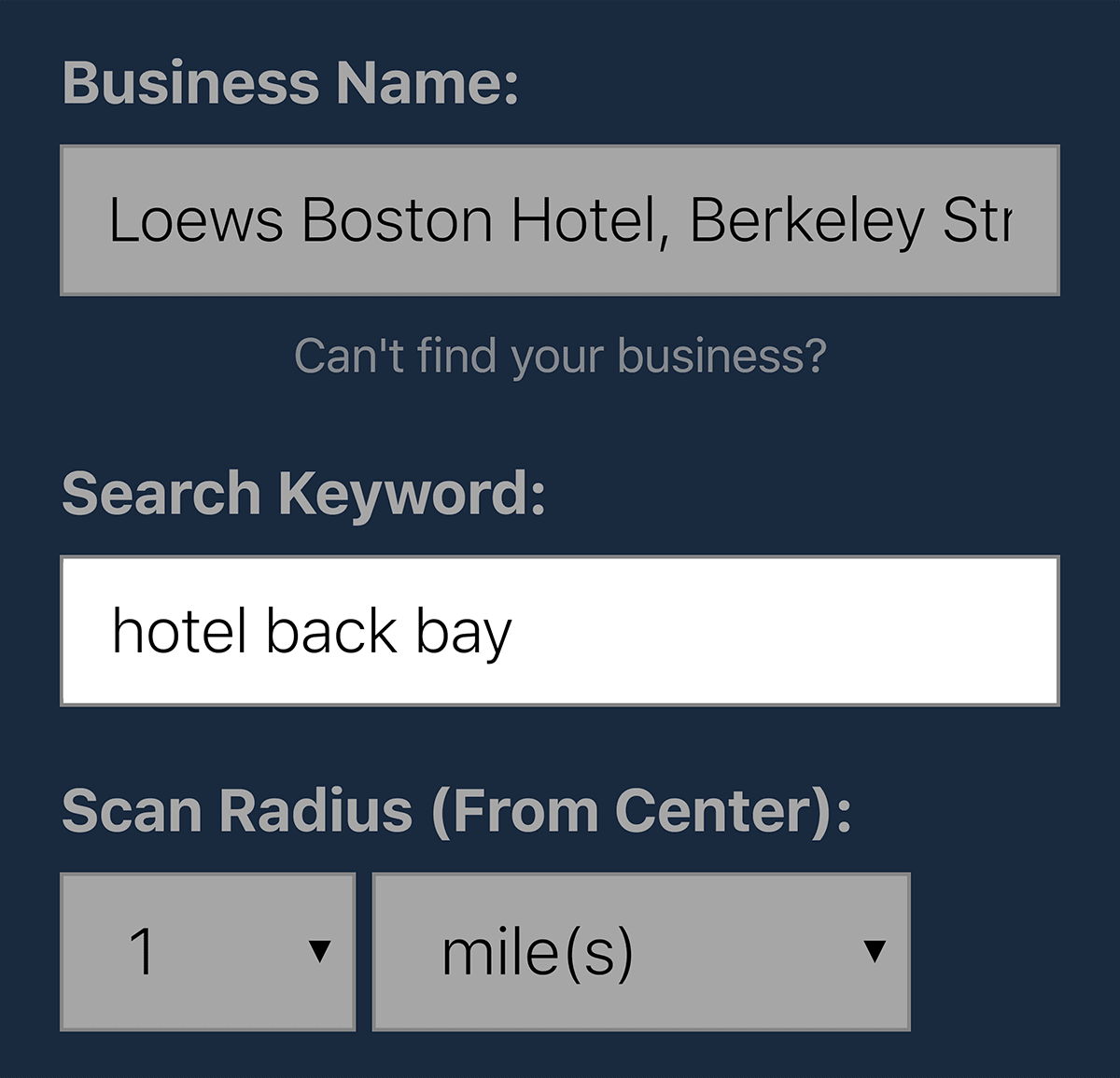
Finally, choose how specific or broad you want your rank tracking to be.
For example, here’s a 5-mile (8km) rank tracking radius.
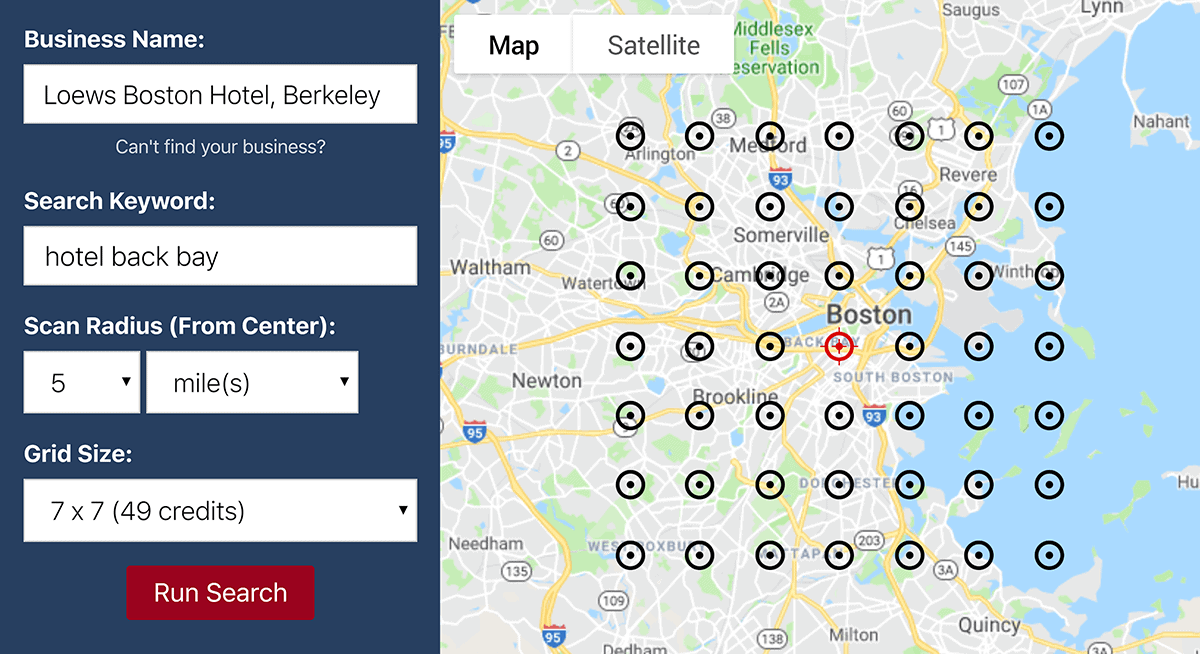
It’s set up with a 7 x 7 grid, which gives you a great idea of where your business ranks across this entire area.
(This grid can go right up to 15 x 15 if you really want to see the edges of where you might rank.)
Then, it’s time to check the rankings.
After the tool does its thing, you end up with a visual interface that shows your rankings for each geographical position:

As you can see, you get a nice interactive map that shows where you rank in lots of different spots throughout the city.
As you can see, rankings are best on the outskirts of the city… and get progressively worse as you go downtown.

This isn’t necessarily a problem. It could be that a competitor has a location that’s more centrally located than your hotel. So for someone doing a mobile search from that location, Google considers the competitor a better fit.
That said, you should use the tool to find spots where you “should” rank well… but don’t.
For example, you can see that this local paving business ranks #1 in the far north of the city… except for one spot.

So in that case, you’d want to click on the result to see who is outranking you:

In this case, a competitor is ranking #1.
But if you’re not satisfied with the #2 spot, check out the competitor’s address in their listing. That way, you can cross-check where they are physically located on this map.
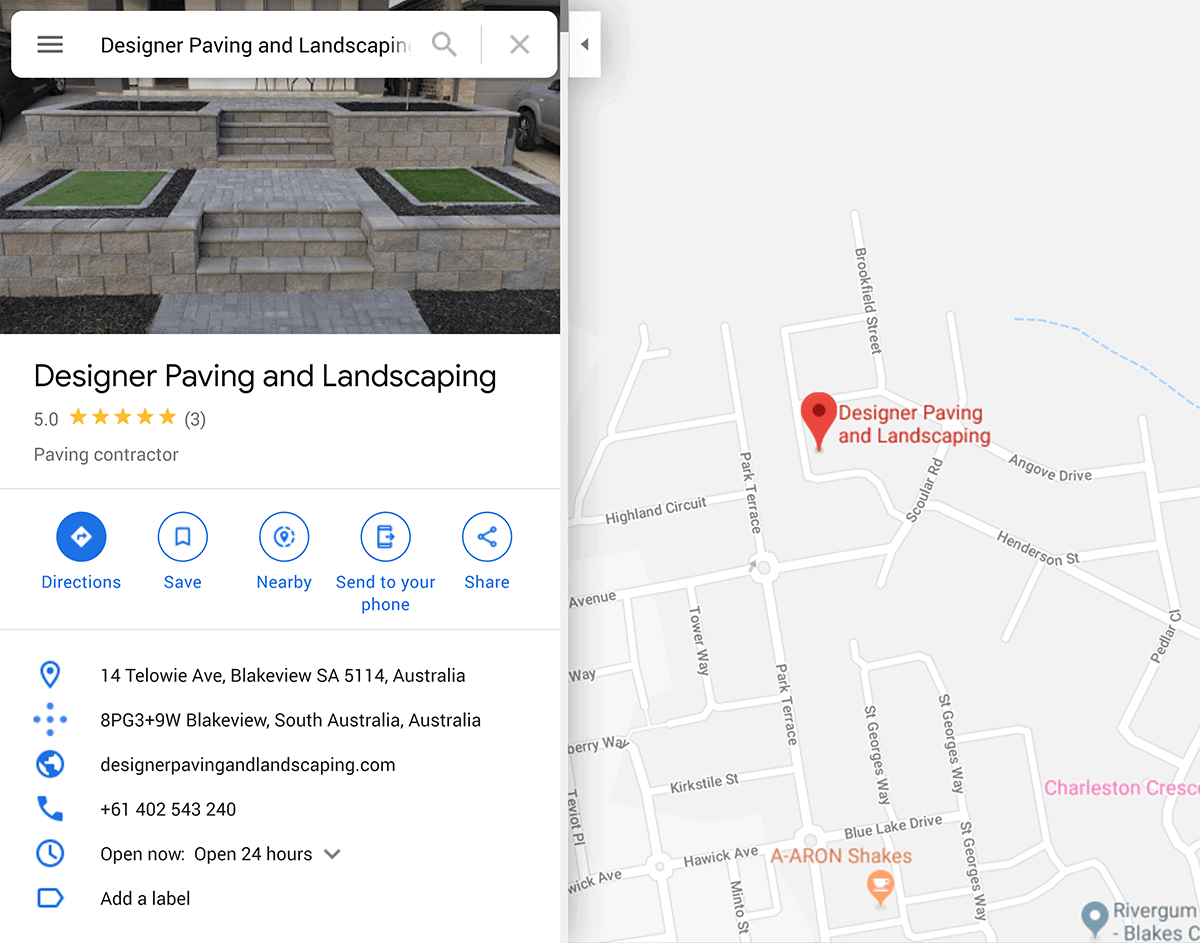
And when you put the competitor’s location on the rankings map, you can see why you’re having trouble cracking the #1 spot.

The simple explanation is that this search location is MUCH closer to the competitor. So it makes perfect sense that Google would want to make this competitor the #1 result.
Content Copyrights Belong to The Author. All Rights Reserved.
We're A Dallas Digital Marketing Agency That is Experts At Social Media Marketing, Website Design and Emarketing and Promotion.



